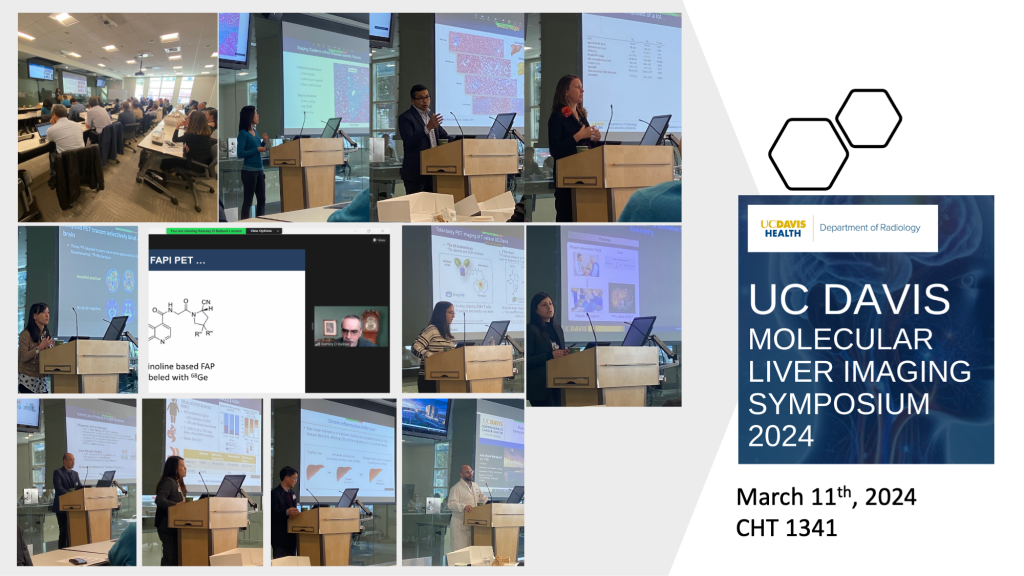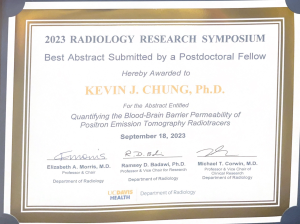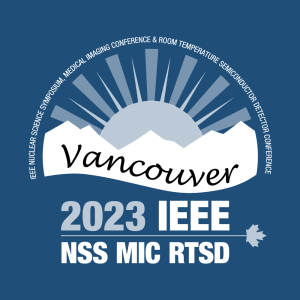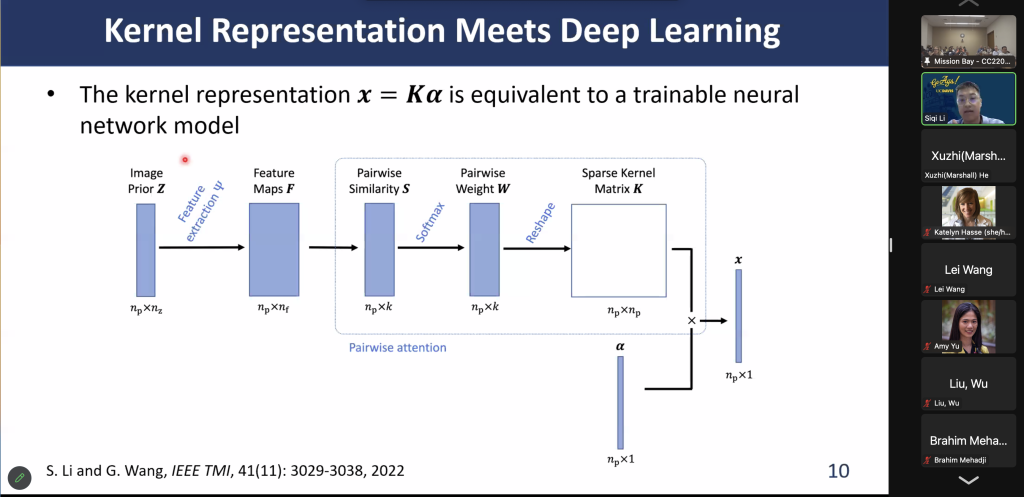We successfully organized the 2024 UC Davis Molecular Liver Imaging Symposium: Collaboration in Systemic Diseases on March 11th, 2024 in the Medical Center. Focusing on the area of liver imaging, colleagues at UC Davis Health organized three symposiums in the past eight years – the first one in 2016 (Organizers: Souvik Sarkar, MD and Michael Corwin, MD), the second one in 2020 (Organizers: Souvik Sarkar, MD and Guobao Wang, PhD), and the third one in 2024 with a particular focus on molecular liver imaging (Organizer: Guobao Wang, PhD).


 Congratulations to Dr. Siqi Li for promotion to Assistant Project Scientist Step 2 and Dr. Yansong Zhu for promotion to Assistant Project Scientist Step 1 in the Department of Radiology, effective March 1st, 2024. They have significantly and uniquely contributed to our PET parametric imaging research program at UC Davis Health.
Congratulations to Dr. Siqi Li for promotion to Assistant Project Scientist Step 2 and Dr. Yansong Zhu for promotion to Assistant Project Scientist Step 1 in the Department of Radiology, effective March 1st, 2024. They have significantly and uniquely contributed to our PET parametric imaging research program at UC Davis Health. hich was developed by our lab in 2018, is now made available on commercial PET scanners by a major manufacturer for clinical use. Compared to other methods, this method does not require the early-time blood input function and is therefore much easier to integrate with a clinical scan protocol for parametric imaging.
hich was developed by our lab in 2018, is now made available on commercial PET scanners by a major manufacturer for clinical use. Compared to other methods, this method does not require the early-time blood input function and is therefore much easier to integrate with a clinical scan protocol for parametric imaging.
 w graduate student. She received her B.S. degree in Cognitive Science at the University of California, Davis. Anahita will be studying how the brain is changed in systemic disease using the total-body parametric PET technology. Welcome Anahita!
w graduate student. She received her B.S. degree in Cognitive Science at the University of California, Davis. Anahita will be studying how the brain is changed in systemic disease using the total-body parametric PET technology. Welcome Anahita!


 Guobao has been promoted to the rank of Full Professor with tenure, effective on July 1st, 2023.
Guobao has been promoted to the rank of Full Professor with tenure, effective on July 1st, 2023. At the
At the  Dr. Kevin Chung joins our lab starting on May 1st, 2023. Dr. Chung received his Ph.D. in Medical Biophysics from the University of Western Ontario, Canada in early 2023. He developed methods and software for low-dose CT perfusion imaging and also has direct experience in PET kinetic modeling. Kevin will work on total-body PET kinetic modeling for FDG blood flow imaging and will be jointly supervised by Dr. Guobao Wang and Dr. Simon Cherry. Welcome Kevin!
Dr. Kevin Chung joins our lab starting on May 1st, 2023. Dr. Chung received his Ph.D. in Medical Biophysics from the University of Western Ontario, Canada in early 2023. He developed methods and software for low-dose CT perfusion imaging and also has direct experience in PET kinetic modeling. Kevin will work on total-body PET kinetic modeling for FDG blood flow imaging and will be jointly supervised by Dr. Guobao Wang and Dr. Simon Cherry. Welcome Kevin!